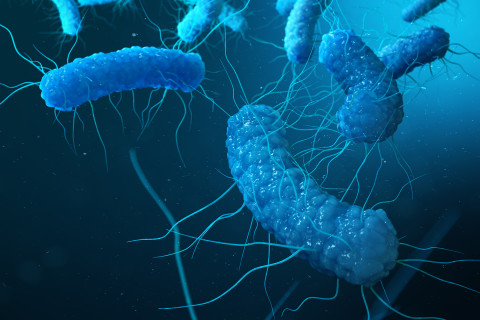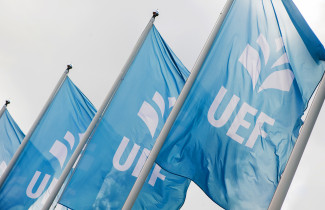The doctoral dissertation in the field of Molecular Nutrition will be examined at the Faculty of Health Sciences.
What is the topic of your doctoral research? Why is it important to study the topic?
The topic of my doctoral dissertation consists of describing metabolic events that enable the discovery of new possible mechanisms associated with Metabolic dysfunction-associated steatotic liver disease (MASLD) pathogenesis. The dissertation proposes an advanced promising microbiome therapeutic based on modified bacteria producing human hormone analogue for the management of MASLD.
As MASLD is a complex and the most prevalent liver disease worldwide without an approved effective medical treatment, it is pivotal to elucidate better MASLD pathogenesis and urgently find a therapeutic strategy. In addition, obesity and altered production of intestinal hormone fibroblast growth factor 19 (FGF19), are implicated in the disease development.
Therefore in my doctoral dissertation, the metabolic and inflammatory changes during MASLD development and progression in the liver were investigated. Furthermore, the effect of the FGF19 analogue aldafermin-expressing bacterium E. coli Nissle 1917, along with dietary change, on enhancing the recovery from MASLD was examined in the liver and visceral adipose tissue.
The experimental part of my thesis was conducted by using a mouse model. Indeed, preclinical studies mimicking the disease conditions in humans are essential for gaining new mechanistic insights.
What are the key findings or observations of your doctoral research?
In my dissertation, in study 1, the MASLD pathogenesis in the liver was associated with significant hepatic expression of lipid metabolism and inflammatory state genes. The expression of these genes correlates with certain lipids and bile acids, which in turn can lead to the discovery of new potentially significant mechanisms driving hepatic steatosis and de novo lipogenesis, both important players of MASLD development and drivers of its progression to a more severe form of the disease disease-defined metabolic-associated steatohepatitis (MASH).
In studies 2 and 3, aldafermin-expressing E. coli Nissle 1917, along with dietary changes, appeared to alleviate metabolic disturbances at the tissue level in the MASLD mouse model: decreased hepatic steatosis, weight and levels of circulating markers associated with liver functions as well as downregulation of pathways linked with oxidative stress and insulin resistance were observed. These findings were accompanied also by an improvement in insulin sensitivity and energy metabolism in visceral adipose tissue.
In my dissertation, new possible mechanisms associated with MASLD pathogenesis were discussed and, for the first time, an advanced novel microbial-based therapeutic has been proposed in combination with dietary change to potentially enhance the effectiveness of dietary interventions, accelerating the recovery process of MASLD. Moreover, the specific use of engineered E. coli Nissle 1917 represents an exciting novel approach of growing interest due to its efficacy in several diseases. It shows promising results in clinical studies for the treatment of several diseases, including metabolic-associated diseases. Therefore, aldafermin-expressing E. coli Nissle 1917 is interesting for the scientific community and for future development of MASLD therapeutics.
How can the results of your doctoral research be utilised in practice?
Currently, the use of E. coli Nissle 1917 expressing aldafermin is under patenting process and future pre-clinical studies are required to gain a more comprehensive understanding of its potential as a therapeutic approach for MASLD. The present series of studies represents descriptive results to allow the findings of new mechanistic pathways and the next concrete steps will be to study the effect of the intervention without dietary changes, elucidate its mechanism of action, its absorption and distribution in the mouse body.
While several aspects require further examination, the results proposed in this doctoral thesis collectively showed new potential mechanistic insights into MASLD pathogenesis. In addition, E. coli Nissle 1917 expressing aldafermin, along with dietary changes, holds potential as a new therapeutic strategy for managing MASLD.
What are the key research methods and materials used in your doctoral research?
In my doctoral dissertation targeted gene expression and transcriptomics analysis along with untargeted metabolomics and biochemical and histological findings were conducted.The focus of my study was on the development of MASLD, which is a liver disease. However, since obesity is a major risk factor that can lead to the development of MASLD, I also investigated visceral adipose tissue, which is believed to play a role in the disease's development.
The doctoral dissertation of Valeria Iannone, MSc, entitled Molecular perspectives on MASLD: Pathogenesis and a novel therapeutic approach. Insights into MASLD development and progression & exploring advanced microbial therapeutics along with dietary changes in mice will be examined at the Faculty of Health Sciences. The Opponent in the public examination will be Associate Professor Chi Bun Chan of The University of Hong Kong, and the Custos will be Professor Marjukka Kolehmainen of the University of Eastern Finland.




